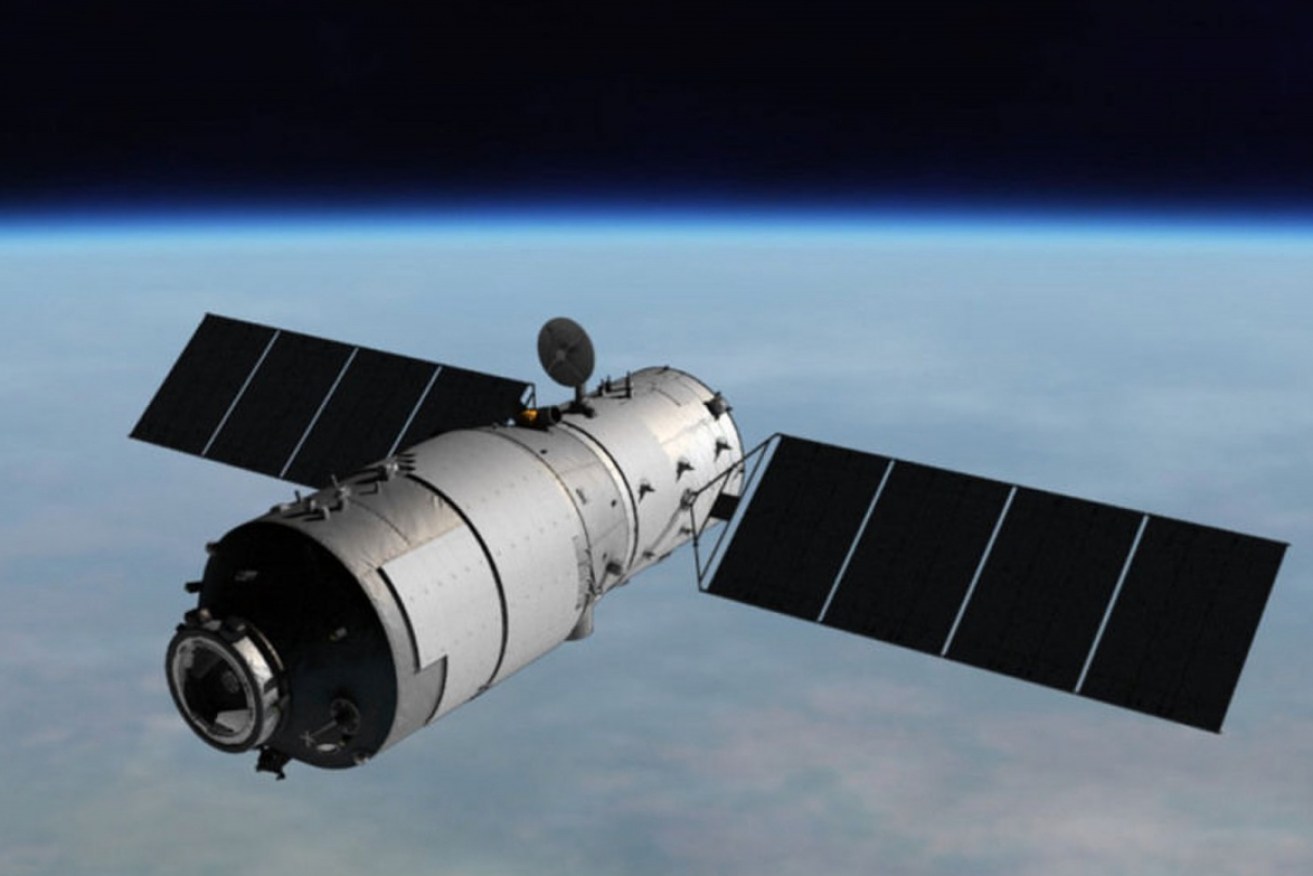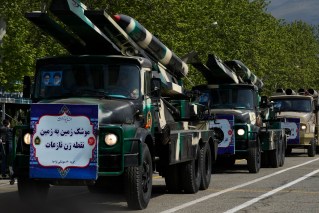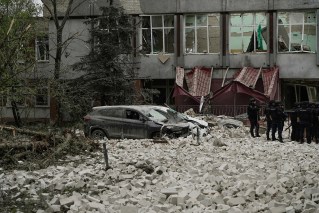China space station may fall to Earth within days

The titanium fuel tank in an uncontrolled Chinese spacecraft is tumbling back to Earth. Photo: Twitter
One of the world’s few space stations, Tiangong-1 or Heavenly Palace 1, is predicted to end its uncontrolled 450km-per-minute orbit of Earth and re-enter the atmosphere as soon as Friday.
It’s difficult to calculate where parts of the spacecraft could crash into Earth, experts say.
The European Space Agency, which has given regular updates on Tiangong-1, estimates re-entry between 30 March and 2 April is “highly variable”.
The fuel tank is likely made of titanium, giving it a chance of making it back to Earth.
But given its speed and other factors, crash sites include everywhere between the latitude of 43 degrees north and south – spanning an area stretching from southern France to Hobart.
Chances are slim it will land in a populated area, let alone hit anyone.

China launched Tiangong-1 in 2011. Photo: AAP
“Anything is always possible but it’s just highly unlikely that this one fuel tank that may or may not survive is going to slam into someone’s house or into someone,” Flinders University space archaeologist Alice Gorman told AAP.
“The thing that would be really nice, if it re-enters over Australia at night, is that we’ll get to see a spectacular sight of the spacecraft breaking up and lighting up as it comes in like a meteor shower.”
The temperature and density of different parts of the atmosphere, the Sun’s activity and what parts are facing Earth will all come into play.
But not knowing the components of Tiangong-1 makes estimating the danger more challenging, Swinburne University astronomer Alan Duffy said.
“China’s secrecy around this nationally significant space mission has meant that the international community doesn’t know what the craft is made of,” Mr Duffy said.
While space junk falls back to Earth every day, this 8.5-tonne station has garnered more interest for a few reasons.
Tiangong-1 featured in 2013 sci-fi thriller Gravity, starring Sandra Bullock, and was briefly the home of China’s first two female astronauts, Liu Yang and Wang Yaping.
It’s also been out of control for two years – a fact China only acknowledged publicly last May when it confirmed it had lost contact with Tiangong-1 and could no longer control its behaviour.
A United Nations agreement means any part of Tiangong-1 remains the property of China. That also ensures China is liable for any damage.
Space lawyer Kim Ellis said it would mean the federal government could present a claim for damage to China should Tiangong-1 collide with and damage a satellite from Australia or damage people or property within Australia.
-AAP








